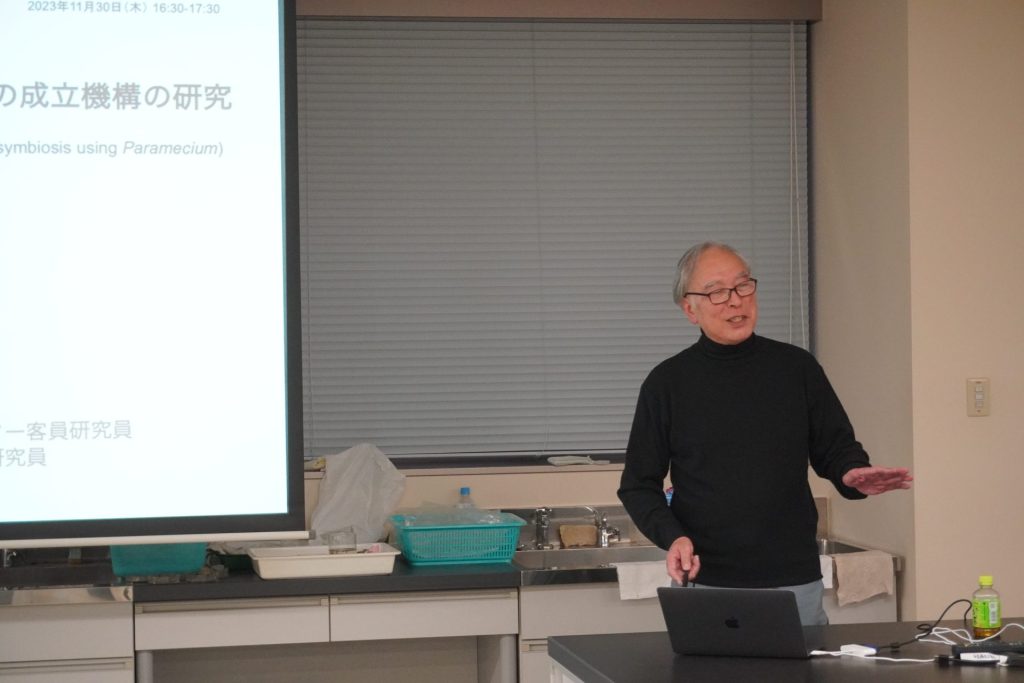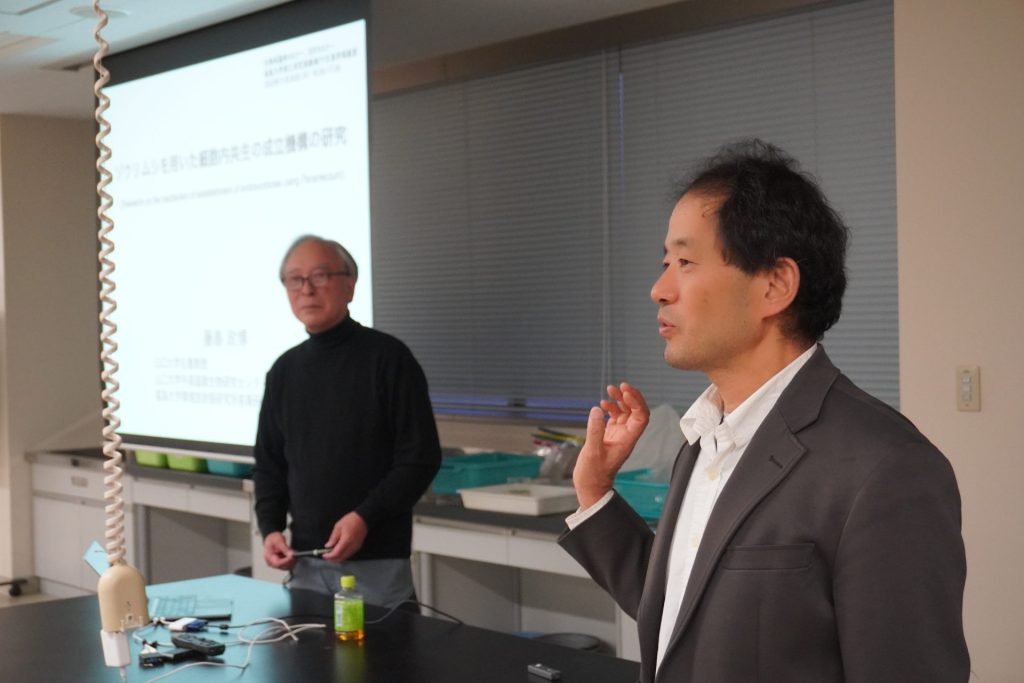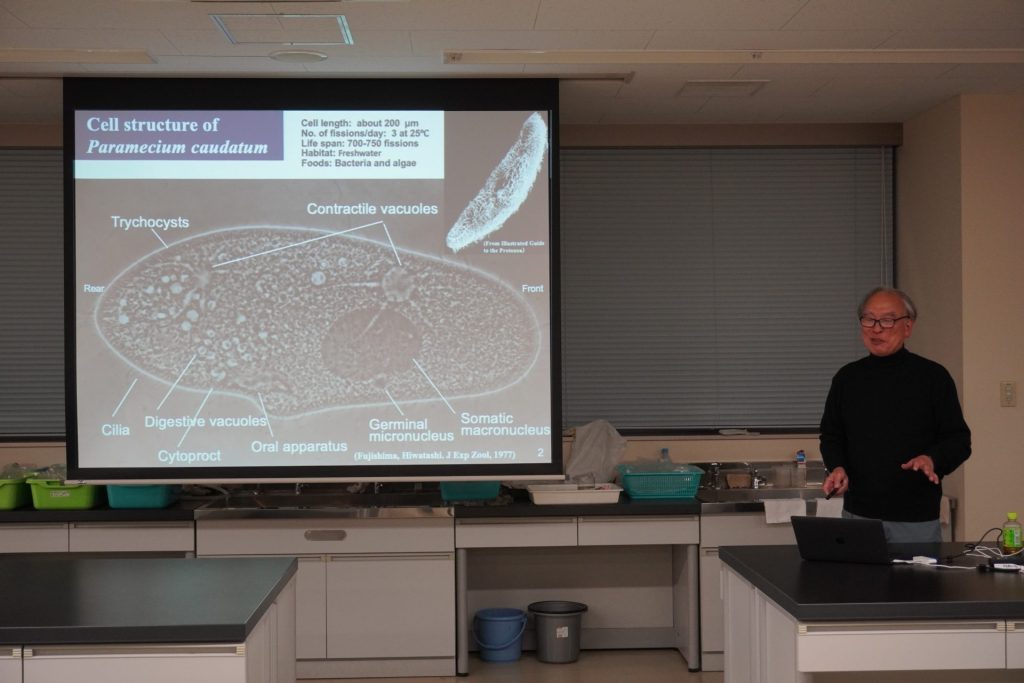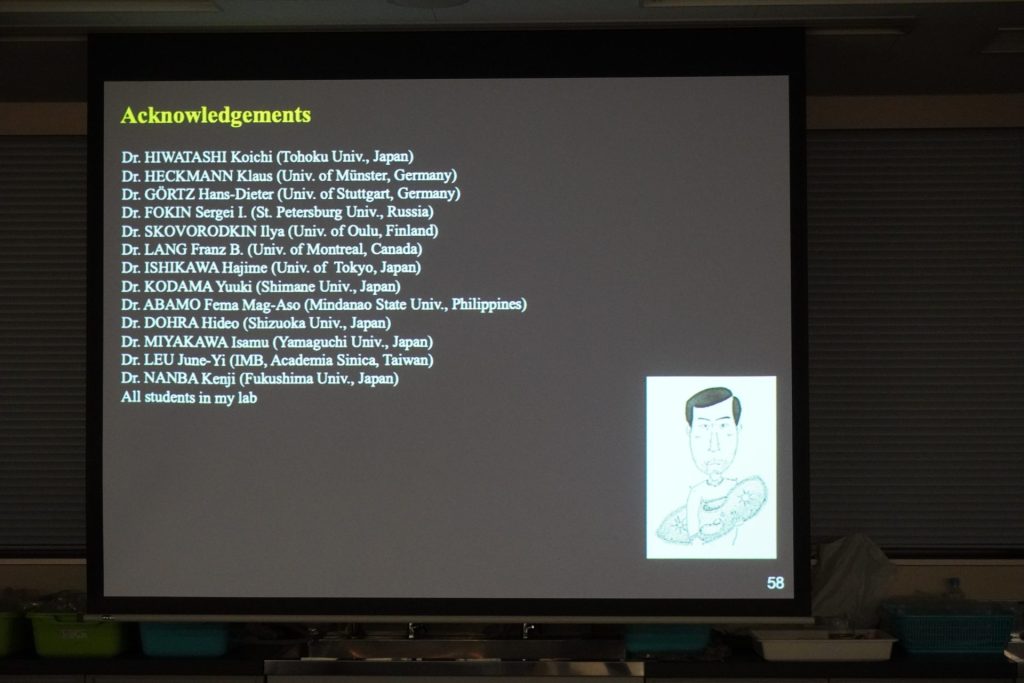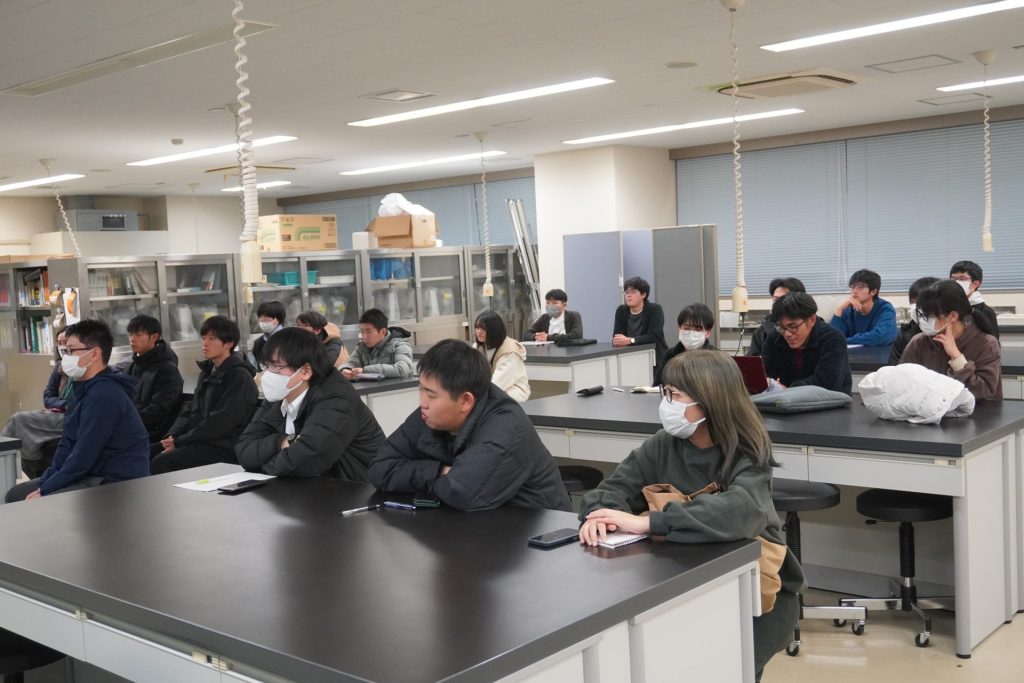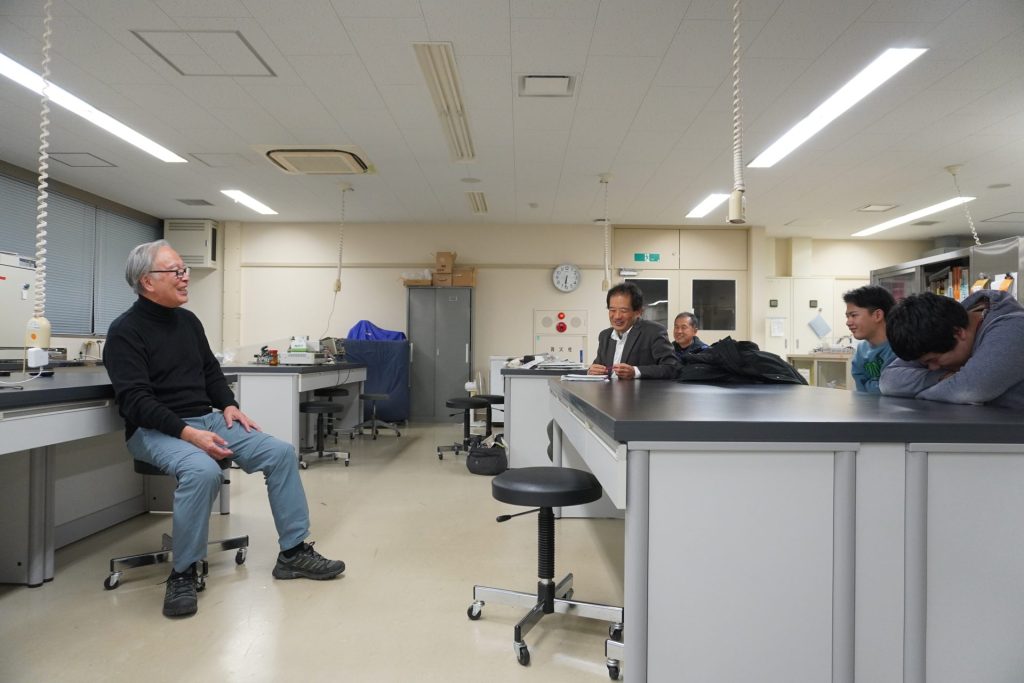November 30, 2023, 7th IER seminar of FY2023 was held <Prof. Emeritus FUJISHIMA>
| Date & Time | Thur. November 30, 2023, 16:30-17:30 JST |
| Venue | 7F Ecology Laboratory room, Symbiotic Systems Science Research Laboratory |
| Speaker | Dr. FUJISHIMA Masahiro, Professor Emeritus at Yamaguchi University Visiting Scholar at Research Center for Thermotolerant Microbial Resources, Yamaguchi University Visiting Scholar at IER |
| Lecture Title | Research on the mechanism of establishment of endosymbiosis using 𝘗𝘢𝘳𝘢𝘮𝘦𝘤𝘪𝘶𝘮 |
Institute of Environmental Radioactivity (IER) regularly holds the IER seminar in which the faculty members report on their research results, with the aim of facilitating their research activities and promoting communication.
The 7th IER seminar of this fiscal year was co-organized with a biology seminar in the Faculty of Symbiotic Systems Science, with a lecture by Dr. FUJISHIMA Masahiro, Professor Emeritus at Yamaguchi University and Visiting Scholar at IER, entitled “Research on the mechanism of establishment of endosymbiosis using 𝘗𝘢𝘳𝘢𝘮𝘦𝘤𝘪𝘶𝘮”.
𝘗𝘢𝘳𝘢𝘮𝘦𝘤𝘪𝘶𝘮 𝘤𝘢𝘶𝘥𝘢𝘵𝘶𝘮 forms a symbiotic relationship with bacteria (𝘏𝘰𝘭𝘰𝘴𝘱𝘰𝘳𝘢 𝘰𝘣𝘵𝘶𝘴𝘢; hereinafter referred to as 𝘏𝘰𝘭𝘰𝘴𝘱𝘰𝘳𝘢) in the macronucleus. Through the symbiosis, the host 𝘗. 𝘤𝘢𝘶𝘥𝘢𝘵𝘶𝘮 acquires tolerance/resistance to high temperatures and high salinity. 𝘏𝘰𝘭𝘰𝘴𝘱𝘰𝘳𝘢, taken up by the digestive vacuoles (DV) during the feeding activity of the 𝘗. 𝘤𝘢𝘶𝘥𝘢𝘵𝘶𝘮, avoids degradation by components contained in the fusing lysosomes, breaches the DV, recognizes the nuclear membrane of the 𝘗. 𝘤𝘢𝘶𝘥𝘢𝘵𝘶𝘮‘s macronucleus, and enters. Dr. Fujishima’s laboratory has been working to elucidate the mechanism by which 𝘏𝘰𝘭𝘰𝘴𝘱𝘰𝘳𝘢 taken in as food symbioses with the nucleus of 𝘗. 𝘤𝘢𝘶𝘥𝘢𝘵𝘶𝘮. In his lecture, he introduced, in an easily understandable manner, the exciting research that has been conducted using immunostaining techniques and synchronized culture techniques to identify proteins and lipopolysaccharides involved in the migration of 𝘏𝘰𝘭𝘰𝘴𝘱𝘰𝘳𝘢 from the DV to the nucleus and recognition of the nuclear membrane.
The lecture closing time was reached with the lecture about symbiosis of 𝘏𝘰𝘭𝘰𝘴𝘱𝘰𝘳𝘢, but Dr. Fujishima continued his lecture on the symbiosis of 𝘗𝘢𝘳𝘢𝘮𝘦𝘤𝘪𝘶𝘮 𝘣𝘶𝘳𝘴𝘢𝘳𝘪𝘢 (𝘗. 𝘣𝘶𝘳𝘴𝘢𝘳𝘪𝘢)and 𝘊𝘩𝘭𝘰𝘳𝘦𝘭𝘭𝘢 𝘷𝘢𝘳𝘪𝘢𝘣𝘪𝘭𝘪𝘴 for the remaining attendees interested in the subject.
In the case of 𝘊𝘩𝘭𝘰𝘳𝘦𝘭𝘭𝘢, unlike 𝘏𝘰𝘭𝘰𝘴𝘱𝘰𝘳𝘢, after budding out of the DV and taking the form of one-cell-by-one-cell 𝘊𝘩𝘭𝘰𝘳𝘦𝘭𝘭𝘢 incorporated into the DV membrane, it changes to a membrane in which host lysosome fusion does not occur and moves within the cytoplasm of 𝘗. 𝘣𝘶𝘳𝘴𝘢𝘳𝘪𝘢. It then migrates to and settles immediately below the cell surface, where 𝘗. 𝘣𝘶𝘳𝘴𝘢𝘳𝘪𝘢’s trichocysts are located. He introduced his study on the molecular mechanisms involved in these processes. Such a study as elucidating the formation process of secondary plants is interesting from an evolutionary biology point of view. From another perspective, Dr. Fujishima enthusiastically shared a vision of his study that could lead to symbiosis engineering, for example, biotechnological symbiosis of photosynthetic organisms in animals.
